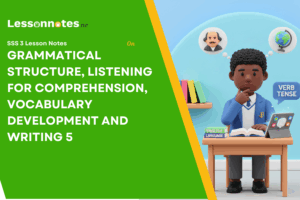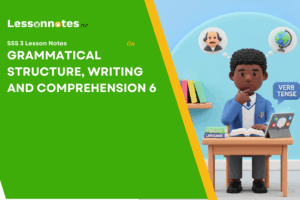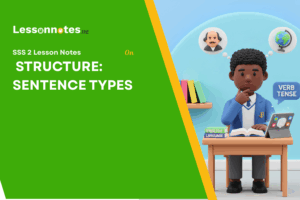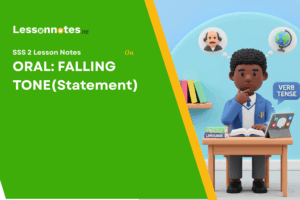Summary & Essay Writing SS3 English Studies Lesson Note
Download Lesson NoteTopic: Summary & Essay Writing
READING
SUMMARY
Summary is the contraction into a few sentences the main point and essence of an essay, the discourse of any formal document. To summarise, describe in your own words a shorter version of the passage you have read, stating the main points and leaving out every other thing that is not essential. This is more than retelling, it involves analysing information, distinguishing important from unimportant elements and translating a lot of information into a few words or sentences.
The summary allows you to reinforce the learning of major points. Therefore, when reading to summarise, you need to;
- Pull out the key details and points.
- Focus on the main points or key details.
- Use the key words and phrases.
- Break down large ideas.
- Take succinct but complete notes, you should not;
- Copy word for word.
- Get scanty in ideas.
- Write too much.
- Write incomplete sentences.
- Write down almost everything in the passage.
- Write ideas that are not expressed in the passage.
It is also important to note that;
- Only the main point and some subordinate points are required.
- The main point can be stated directly or implied.
- All extraneous materials should be left out. Use a few quotations.
WRITING
Types of essays are:
- Narrative essay
- Descriptive essay
- Argumentative essay
- Expository essay
- Letter writing
How to approach essay writing
- Gather ideas by writing an outline
- Organise the ideas/ outline
- Develop the ideas (must be in paragraphs)
- Revise the ideas (to correct errors)
- Ideas should not be lumped into a single paragraph. Linking words like moreover, furthermore, again, in addition, etc should be used to start a new paragraph.
Assessing an essay
- Content: the ideas presented must be relevant to the central theme.
- Organisation: the writing must be judged as whatever it is intended to be: an article, a speech, a letter, an argument, a debate, etc. The qualities to look for are a suitable opening, adequate development, good paragraphing, balance, coherence and a suitable conclusion.
- Expression: the positive qualities to be looked for under Expression include the following:
- Clarity and the general appropriateness of style.
- Variation of sentence structure and type.
- Judicious use of figurative language.
- Skillful and sophisticated use of punctuation.
- Mechanical accuracy: the main categories of error are:
- Undeniable errors in grammar
- Punctuation errors
- Spelling errors Assessment of length (450 words)
- 13 words per line – (35 lines)
- 12 words per line – (38 lines)
- 11 words per line – (41 lines)
- 10 words per line – (45 lines)
- 9 words per line – (50 lines)
- 8 words per line – (56 lines)
- 7 words per line -(64 lines)
- 6 words per line – (75 lines)
- 5 words per line – (90 lines)
- 4 words per line – (112 lines)
STUDENTS’ ACTIVITY: the students listen at
The teacher evaluates the lesson using the following questions.
- List types of essays
- State how to approach an essay question
- List things that are assessed in SSCE essays
- State the importance of paragraphing in essay writing.
STUDENTS’ ACTIVITIES: The students answer the questions.
ASSIGNMENT: Write the formal letter from the last examination.
REFERENCE:
- Cambridge English Pronouncing Dictionary 17th edition by Daniel Jones, SSCE marking scheme
- New Concept English book 3 by Q.Adams et al





















